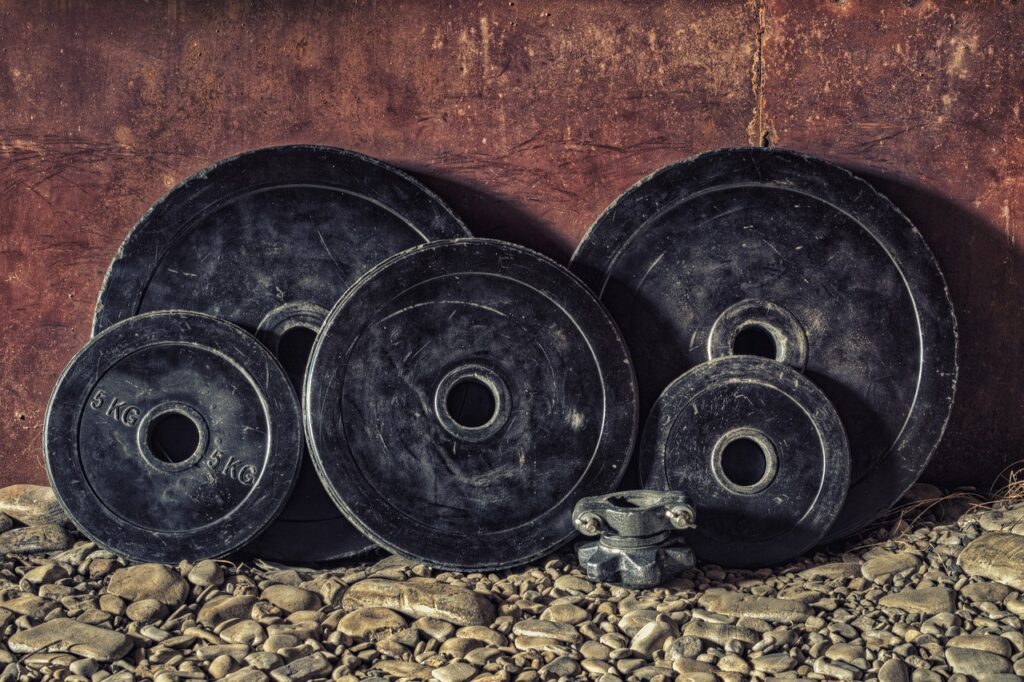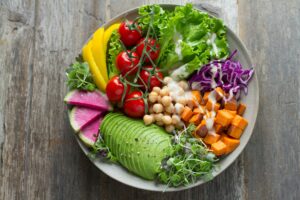Everything about Carb Cycling
Carb cycling is something that has been gaining quite a bit of traction within the health and fitness industry of late, where it has been said to allow the loss of fat and the growth of muscle to occur on a week-by-week basis.
Now I realize that in terms of promoting body composition change, this essentially describes the ultimate goal for many of us – the thing that all gym goers are looking for, and something that is oft considered unattainable.
And it is for this reason that you may also be a little skeptical.
But, before you disregard it completely, I should let you know – that when implemented correctly – carb cycling can make a huge difference to the results of our training.
In fact, when used properly, it can allow us to make extremely large changes to our body composition in a rather short amount of time. This truly makes it one of the most effective dietary strategies we can implement – period.

What is carb cycling?
In short, carb cycling describes a method of dieting that requires planned increases and decreases in daily carbohydrate intake.
With this in mind, it requires us to separate the days of the week into one of three days:
- High Carb Day: A day when we consume a relatively high amount of carbohydrates. A consumption of 2 – 2.5 grams of carbohydrates per pound of body weight appears to be about the norm here.
- Low Carb Day: A low carb day is where we slightly restrict carbohydrate intake to around 0.5 – 1 grams per pound of bodyweight.
- Very Low Carb Day: As its name suggests, this is where we severely restrict carbohydrate intake as means to lower energy intake and promote rapid fat loss. A very low carbohydrate day requires us to eat 30 grams of carbohydrates or less for the entire day.
Now while this may sound a little complex to implement, it isn’t actually all that challenging.
A simple calorie counting app (such as ‘my fitness pal’) will allow you to track your carbohydrate intake on a daily basis. I should also note that the way we choose to allocate our ‘carbohydrate days’ is highly dependent on our training regime.
Which lends itself nicely to our next section…
How and why should I use carb cycling?

Now, to build muscle it is commonly accepted that we need to meet three key criteria:
Firstly, we need to ensure that we are undertaking heavy weight-based training a few times per week. This will allow us to cause both metabolic and mechanical damage to the muscle tissue, which stimulates the repair and growth of that same muscle tissue.
Secondly, we need to have adequate protein available. As protein is essentially the building block for our muscle cells, it needs to be readily available within the body. If it is not, we will be rendered unable to recover from our training sessions. This will severely limit our ability to promote muscle growth and repair.
Finally, we need to have adequate carbohydrates available to fuel our heavy-weight training session AND to promote the repair of muscle tissue. If we have a restricted carbohydrate intake, then we will not be able to train with any great intensity – thus limiting training-induced muscle damage. Additionally, carbohydrates play an important role in the repair of damaged muscle tissue, as such having them ready for use within the body is integral to maximizing muscle growth.
On the other hand, to promote fat loss, we need to be in a calorie deficit, while also limiting carbohydrate consumption.
With this in mind, by restricting calorie intake we can ensure that we are using more energy than we are consuming – which is absolutely imperative to promoting weight loss.
Additionally, by restricting carbohydrate intake, we can increase the body’s ability to breakdown fats for energy.
This increases fat loss specifically.
Now traditionally, these two phenomena were considered completely opposite – and as such it was considered impossible to promote both on a week-by-week basis.
Which is exactly where carb cycling comes in.
Simultaneous muscle growth and fat loss
You see, by consuming large amounts of carbohydrates on the days when we have heavy-weight training sessions, we can create an environment optimal for promoting muscle growth.
On days when we perform moderate-intensity training (like some light aerobic exercise), we have a low carbohydrate day. This will provide the body with enough energy to recover from this light exercise, while also allowing the energy deficit essential to promoting fat loss.
And then on rest days (where we perform no exercise) we can have a very low carbohydrate day. This will ensure an energy deficit while also increasing fat metabolism – the result of which will lead to significant fat loss over the course of a week.
So considering all this, we can implement carb cycling in accordance with our training regime to promote both muscle growth and fat loss – making it a fantastic option for those looking to make HUGE changes in body composition.
Carb Cycling Example
So although the premise of carb cycling is straightforward, I do believe that providing a visual example of how you can implement it into your life is incredibly important. The following demonstrates exactly how I structure my week when I’m implementing carb cycling (which I have been for the past 12 months consistently).
|
Day
|
Training
|
Dietary Day
|
|
Monday
|
Heavy Lower Body Session
|
High Carb Day
|
|
Tuesday
|
Light Upper Body Session
|
Low Carb Day
|
|
Wednesday
|
Rest Day
|
Very Low Carb Day
|
|
Thursday
|
Light Lower Body Session
|
Low Carb day
|
|
Friday
|
Heavy Upper Body Session
|
High Carb Day
|
|
Saturday
|
Recovery Hike
|
Low Carb Day
|
|
Sunday
|
Rest Day
|
Very Low Carb Day
|
In this example, you can clearly see how I structure my week in accordance with my training goals. This allows me to get the most out of my training, while also stimulating fat loss on my lighter training days.
You can see that on my heaviest training days, I opt to consume more carbohydrates to ensure that I can not only train at a high intensity (stimulating maximal muscle damage) but also provide the body with the nutrients it needs to recover optimally.
On the other hand, on those days where I undertake little or no exercise, I consume very little carbohydrates. This promotes an excellent environment for fat loss, without impacting my ability to train on other days of the week.
Take Away

Carb cycling is one of the most effective dietary tools that you can implement into your lifestyle. By rotating your carbohydrate intake around your training you can ensure that you have adequate nutrients available to promote muscle growth on training days while stimulating fat loss on light- and non-training days.
As an added bonus, carb cycling is incredibly easy to implement and takes very little thought and planning. This makes it one of the most effective and efficient means of promoting large and rapid body composition change through diet.














Post Comment